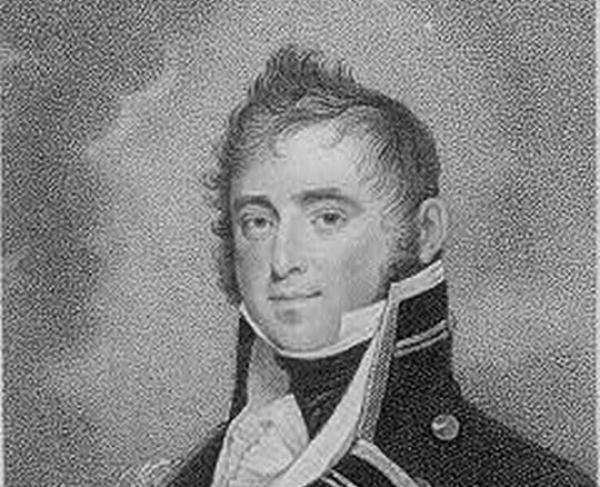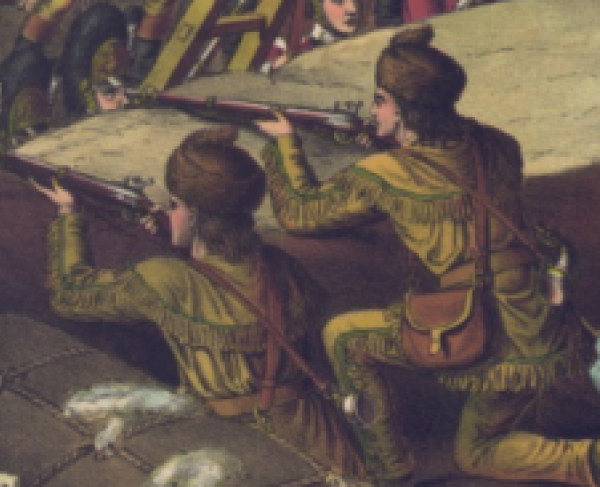James Lawrence

Many noted figures from the War of 1812 either had relatives that served in or were themselves involved with, the War for Independence. Not so with Captain James Lawrence, who was born in New Jersey in 1781 to a family of Loyalists. He was raised mostly by his half-sister, as his mother died when he was an infant, and his father fled to Canada, fearing retribution from his neighbors. Most of Lawrence’s relatives expected him to become a lawyer, yet he shocked them all at the age of eighteen when he declared his desire to join the fledgling United States Navy. He began his career as a midshipman on the USS Ganges, a twenty-four gun frigate and promoted to lieutenant in time for the Quasi-War with France, where the ship spent much of the time catching French privateers. He also fought in the First Barbary War on a small schooner called the USS Enterprise and served along figures such as David Porter and Stephen Decatur. Lawrence actually served as Decatur’s second-in-command during the latter’s famous nighttime raid on Tripoli Harbor and burning the captured USS Philadelphia.
Lawrence stood at the center of naval action in the War of 1812. As commander of the USS Hornet, he became the first American naval officer to capture a British vessel, the privateer Dolphin, when the war started. In March of 1813, the Navy promoted Lawrence to full captain in acknowledgment of his service and gave him command of the frigate USS Chesapeake, which he sailed out to sea that June to confront the British frigate HMS Shannon blockading the port in Boston. The Chesapeake was the larger ship and more heavily armed, but it had suffered heavy damage in recent years and was quickly repaired to make it seaworthy. The two ships fired on each other at close range, but it soon became clear that the British vessel had far better command of the sea, and did heavy damage to the Chesapeake’s officers and gun crews. Lawrence tried to rally his men and prepare a boarding party in the confusion. In the midst of battle, Lawrence fell mortally wounded by a British sharpshooter and quickly carried below deck. Before he died, James Lawrence gave one final command to his crew: “Don’t give up the ship,” and true to form, no one on the Chesapeake officially surrendered to the British, even as they were overwhelmed by the enemy sailors and marines.
The loss of Lawrence greatly saddened many in the navy, as he was incredibly popular and generous with his peers, superiors, and subordinates. Most affected of all was his friend Oliver Hazard Perry, who named his flagship the USS Lawrence, which flew a blue flag emblazoned with Lawrence’s final command into the Battle of Lake Erie. “Don’t Give Up the Ship” remains the watchword of the United States Navy to this day. As for Lawrence himself, he buried with honors by his enemies in Halifax, Nova Scotia. Later, his body was finally laid to rest in the Trinity Church Cemetery in Manhattan, where it remains today.


